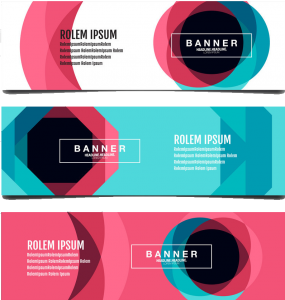Ad spend wastage is getting out of control, and it’s been a ticking time bomb in the advertising world for years. Back in 2018, Rakuten Advertising (formerly Rakuten Marketing) dropped a bombshell report—26% of all media ad spend was going straight down the drain. Fast forward to today, and that number has skyrocketed, with some estimates putting the waste at a staggering 40%.
And here’s the kicker—it’s getting harder to track where exactly the money is slipping through the cracks. Every year, ad budget wastage climbs to ridiculous levels, outpacing previous years like a runaway train. Everyone’s talking about it, but no one seems to have a definitive answer on who’s to blame—platforms, publishers, bots, poor targeting? The debate rages on.
But here’s the deal: waiting around for a verdict isn’t an option. If you’re running ads, you have to take matters into your own hands. Protecting your ad budget isn’t just a suggestion—it’s a survival tactic in the advertising world. The digital advertising space is brutal, and if you’re not careful, you’ll be left pouring money into campaigns that don’t deliver.
So, what can you do to stop the financial hemorrhaging? In this article, we’ll break down practical ways to protect your ad budget and keep more of your investment working for you instead of lining the pockets of ad networks, bots, or unqualified clicks. Let’s dive in.
Table of Contents
ToggleWho’s Really Behind Click Fraud?

By now, you’ve probably asked yourself: Why the hell would anyone purposely click on someone else’s ads? What’s in it for them? What’s the motive?
Surprise, surprise—there are plenty of shady reasons. And while it might not seem obvious to the average advertiser, anyone engaging in click fraud is either looking to make money or drain a competitor’s ad budget.
Let’s break it down.
#1. Competitors: The Usual Suspects
Your biggest click fraud threat? The cutthroat competitors in your industry. If you’re running PPC ads, you’re fighting for the same keywords, the same audiences, and the same prime ad placements. And when the stakes are high, some competitors won’t think twice about playing dirty.
By repeatedly clicking your ads, they can quickly burn through your daily budget, forcing your campaigns to pause before the day is even over. That means lost traffic, fewer conversions, and wasted money—all while their ads stay live, scooping up the audience you paid to reach. If you don’t actively protect your ad budget, you’re leaving the door wide open for these underhanded tactics.
#2. Webmasters: Cashing In on Clicks
But competitors aren’t the only ones cashing in on click fraud. Enter: shady webmasters.
Google’s AdSense program allows website owners to display ads and earn a cut of the revenue per click—66%, to be exact. The more clicks they generate, the more cash they pocket. You can probably guess where this is going…
It didn’t take long for webmasters to realize they could boost their earnings by clicking on their own ads or setting up fake interactions. Even worse, some go as far as using click farms or bots to generate massive amounts of invalid clicks. This means your ads could be bleeding money on fake traffic without you even realizing it.
#3. Fraud Rings: Organized Crime, But Digital
Now, if webmasters can game the system on a small scale, imagine what happens when fraudsters turn it into a full-blown business model.
That’s exactly what click fraud rings do. These large-scale operations use botnets—huge networks of infected devices—to generate millions of fake clicks. The worst part? These fraudsters are raking in anywhere from $3 to $5 million per day, all by exploiting advertisers who aren’t actively monitoring their campaigns.
Click fraud isn’t just a minor annoyance—it’s a billion-dollar problem. If you’re not taking steps to protect your ad budget, you’re basically handing free money to fraudsters. That means less ROI, skewed campaign data, and wasted ad spend that could’ve gone toward actual customers.
The good news? There are ways to fight back. From fraud detection tools to campaign monitoring, you can take control. Because in today’s digital ad space, it’s not just about running ads—it’s about making sure your investment is actually reaching real people, not bots or bad actors.
How Click Fraud Wrecks Advertisers

At first glance, click fraud might seem like a minor nuisance—just a few wasted bucks here and there, right? If advertisers are already spending thousands on PPC ads, a handful of fake clicks shouldn’t matter… or so it seems.
But here’s the real deal: Click fraud doesn’t just drain your wallet—it skews your data, wrecks your strategy, and can even push businesses to abandon paid ads altogether. If you don’t actively protect your ad budget, you could be making campaign decisions based on garbage data without even realizing it.
#1. Skewed Analytics = Bad Marketing Decisions
Every click counts in PPC advertising, but what happens when a chunk of those clicks are from bots, competitors, or fraudsters? Your analytics turn into a mess.
Let’s say your dashboard is showing a spike in traffic—looks great on the surface. But if a good portion of those visitors are fraudsters clicking for their own gain, your conversion rates drop, your cost per acquisition skyrockets, and your ROI takes a nosedive. Worst of all, you might start making critical marketing decisions based on completely bogus data.
Without a strategy to protect your ad budget from fraud, you could end up throwing even more money at campaigns that aren’t actually reaching real customers.
#2. Ruined Retargeting Efforts
Retargeting campaigns are a goldmine—when done right, they can pull in 7x to 8x your return on ad spend (ROAS). But click fraud? It throws a wrench in that.
When bots or bad actors interact with your ads, they get added to your remarketing lists, completely distorting your audience data. Instead of retargeting potential buyers, you’re wasting budget chasing after fake traffic. That means fewer real conversions, weaker engagement, and a campaign that’s burning cash without delivering results.
#3. Businesses Pull the Plug on Paid Ads
For some advertisers, click fraud doesn’t just hurt—it kills their confidence in PPC altogether.
Imagine spending thousands on ads only to see a weak ROI. Without realizing fraud is eating up their budget, some businesses assume paid ads just don’t work for them. So, instead of blocking the fraudsters and tightening up security, they pull the plug entirely—leaving their competitors to dominate the space uncontested.
The Bottom Line: Protect Your Ad Budget Before It’s Too Late
Click fraud isn’t just an inconvenience—it’s a massive financial leak. If you don’t put safeguards in place to protect your ad budget, you’re playing a dangerous game where fraudsters win, and you lose.
The good news? You can fight back. From fraud detection tools to manual monitoring, there are ways to lock down your campaigns and ensure your ad dollars go toward real potential customers—not bots, click farms, or shady competitors. Because in the world of digital advertising, the smartest players aren’t just running ads—they’re making sure their investment is actually safe from fraud.
How to Fight Back Against Click Fraud
Click fraud has skyrocketed over the past decade, and advertisers have been in a constant battle to keep their budgets safe from fake clicks.
Sure, Google has its own Invalid Click Center to combat ad fraud, but let’s be real—many advertisers feel it’s not doing enough. Fraudulent clicks still slip through, draining ad spend without delivering real results.
That’s why savvy PPC experts have taken matters into their own hands, coming up with smart, battle-tested ways to cut down on click fraud using Google’s own platform. While these methods won’t stop every single fake click, they can make a huge difference in protecting your budget and getting more value from your ads.
The best part? These tips and tricks are completely free! Anyone running Google Ads can implement them and start reducing ad fraud today.
#1. USE EXCLUSION LISTS TO KEEP YOUR AD BUDGET SAFE

If you’re running display ads, listen up—click fraud is way worse on Google’s Display Network than on Search. Why? Because website owners (aka webmasters) get paid per click. And when money’s involved, shady tactics aren’t far behind. Some webmasters outright engage in click fraud, while others strategically place ads where users are bound to accidentally click. Either way, you pay for those clicks, and if you don’t take action, your budget could be bleeding dry.
Stop Wasting Money on Useless Clicks
Not every website in Google’s Display Network is out to scam you, but plenty of them will never bring you a real return on investment. If you don’t actively protect your ad budget, you’ll keep paying for clicks from low-quality sites that offer zero conversions.
Luckily, there’s an easy fix: Exclusion Lists. Think of these like negative keywords but for display ads—they let you block junk websites that drive fake clicks and trash traffic.
How to Use an Exclusion List in Google Ads
We recently dropped a massive sheet of over 60,000 low-quality websites that are notorious for draining ad budgets. These sites have been flagged for poor performance, low ROI, and high levels of fraudulent activity based on data from our platform and clients.
Here’s how you can put this list to work:
#1. Copy the exclusion list (grab it from our blog).
#2. Go to Google Ads and create a new placement exclusion list.
#3. Apply it to your display campaigns and block those bad sites for good.
Why This Works
Once you activate the exclusion list, your ads will no longer appear on those sketchy websites. That means no more wasted clicks, no more paying for accidental taps, and a lot more control over where your ad spend goes. It’s a simple yet powerful way to protect your ad budget and make sure your money is spent on real potential customers, not click fraudsters.
Bottom line? If you’re serious about getting the most out of your display ad campaigns, exclusion lists aren’t optional—they’re a must.
#2 BLOCK YOUR COMPETITORS’ LOCATIONS & PROTECT YOUR AD BUDGET

If you’re not using Google Ads’ location targeting, you’re leaving money on the table—and worse, you’re probably funding your competitors’ bad habits. This feature isn’t just for picking where your ads show up—it’s also a killer tool for making sure they don’t show up in the wrong places. And when it comes to click fraud, blocking the right locations can save you from pouring your budget down the drain.
Why Should You Care?
If you’re running Google Search Ads, your competitors are definitely seeing them. And guess what? Some of them are clicking—not because they’re interested, but because they want to drain your ad budget. Those repeated, useless clicks add up fast, and before you know it, your daily ad spend is maxed out before noon.
Yeah, you could try to block their IP addresses, but let’s be real—you’re not about to magically uncover their exact IP details unless they hand them over (spoiler: they won’t).
Instead of playing detective with IP addresses, just block their entire office location. Most businesses list their addresses on their website, LinkedIn, or Google Business Profile. Grab that info and plug it into Google Ads’ exclusion settings. Once set up, your ads won’t show up in their physical location anymore, meaning they can’t click what they can’t see.
Why This Works (And a Sneaky Bonus Perk)
Beyond stopping direct click fraud, this method also plays mind games with your competition. If they suddenly stop seeing your ads, they might think you’ve shut down your campaigns or run out of budget. Meanwhile, you’re still showing up for real customers in the right places.
This trick isn’t foolproof—competitors outside the blocked area can still see your ads. But it’s a solid extra layer of defense that makes it harder for them to mess with your campaigns. And when it comes to keeping your ad budget protected, every little advantage counts.
So, if you’re serious about cutting out wasted ad spend, stop letting your competitors eat up your clicks—lock them out of your campaigns with smart location targeting.
Some Additional Great Ways to Protect Your Ad Budget?
#3. SET CLEAR CAMPAIGN GOALS AND PROTECT YOUR AD BUDGET
Running ads without a clear goal is like throwing money into the wind and hoping it lands somewhere useful. Spoiler: it won’t. If you’re serious about making your ad budget work for you instead of against you, the first step is getting your campaign goals locked in before you even think about hitting launch.
Why Goals Matter (And Why “More Clicks” Ain’t Enough)
Every ad campaign needs a purpose. Are you chasing leads, brand awareness, or conversions? Each one demands a different strategy, targeting method, and messaging style. Trying to wing it without setting a clear objective? That’s the fastest way to waste your ad budget on clicks that don’t actually do anything for your business.
Choose the Right KPIs—Not Just the Flashy Ones
Clicks are cool, but not all clicks are created equal. If your goal is conversions, focusing on CTR (Click-Through Rate) alone won’t tell you the full story. You could have sky-high CTR but a terrible conversion rate, meaning you’re paying for a bunch of useless traffic. Instead, tracking metrics like CPL (Cost Per Lead) or ROAS (Return on Ad Spend) can help you see whether your ad spend is actually paying off.
A well-defined campaign goal doesn’t just make your life easier—it makes sure every dollar spent is working toward something valuable. Without it, you’re just shooting in the dark and hoping something sticks. Define your goals, pick the right KPIs, and protect your ad budget from getting drained by unfocused spending.
#4. DIAL IN YOUR TARGETING AND PROTECT YOUR AD BUDGET
If you’re throwing your ad money at broad, generic keywords, you might as well be setting it on fire. Broad targeting doesn’t guarantee results—it just guarantees that your budget disappears faster than you’d like. The smarter move? Get specific, get precise, and make every dollar count.
Why Broad Keywords Are a Budget Killer
Sure, broad keywords bring in traffic, but is it the right traffic? Just because someone clicks your ad doesn’t mean they actually need what you’re offering. If they bounce right after clicking, that’s money down the drain. Instead, tighten up your keyword list and focus on intent-driven, long-tail keywords that match exactly what your audience is looking for. That’s how you protect your ad budget from being wasted on people who were never going to convert in the first place.
Social Media Ads? It’s All About Audience Targeting
When it comes to Facebook, Instagram, and other social media ads, keywords take a backseat. Here, it’s all about nailing the right audience targeting. The more specific you get—interests, behaviors, demographics, even retargeting past visitors—the more likely your ads will land in front of people who actually care. A broad audience means higher costs, lower returns, and a whole lot of wasted clicks.
Whether you’re using Google Ads, Facebook, or any other platform, one rule stays the same: precision beats volume. Get clear on who you want to reach, what they’re searching for, and when they’re most likely to convert. Do that, and your ads won’t just get clicks—they’ll get results. More importantly, you’ll protect your ad budget from being eaten up by irrelevant traffic that never had any intention of buying.
#5 FINE-TUNE YOUR TARGETING AND PROTECT YOUR AD BUDGET

Geo-targeting can be a goldmine—if you use it right. But if you’re sloppy with your targeting settings, you’ll end up blowing your budget on people who were never meant to see your ads in the first place. The wrong settings can tank your ROAS faster than you realize.
Why Your Location Targeting Might Be Bleeding Money
When setting up geo-targeted ads on Google or Facebook, you’ve got options. The problem? Choosing the wrong one can kill your campaign. Take this scenario:
You’re running ads for a Paris-based business, but instead of targeting locals who live in Paris, you accidentally target tourists who just passed through. They see the ad, maybe even click it—but will they convert? Probably not. And guess what? That’s your money down the drain.
The Fix? Get Laser-Focused & Protect Your Ad Budget
To make sure your ads actually reach the right people, you need to refine your targeting status settings. Platforms like Google Ads let you choose between:
✔ People living in the targeted location
✔ People recently in the targeted location
✔ People searching for the targeted location
Choosing the wrong one? That’s how you accidentally waste ad spend. But selecting the right setting? That’s how you protect your ad budget and ensure your ads are shown to those most likely to convert.
Geo-targeting isn’t just about picking a city or country—it’s about zeroing in on the right audience within that location. Don’t let vague settings siphon away your ad spend. Tighten things up, be hyper-specific, and make sure your ads reach the exact people you want. That’s how you protect your ad budget and maximize your returns.
#6. SHIELD YOUR ADS AND PROTECT YOUR AD BUDGET WITH FRAUD PREVENTION TOOLS
Running online ads without fraud protection is like leaving your wallet out in the open—you’re just asking to get ripped off. Click fraud is everywhere, and if you’re not actively blocking bots and shady clicks, you’re practically throwing your money away.
Why You NEED an Anti-Fraud Tool
Ad fraud isn’t just a minor nuisance—it’s a full-blown profit killer. Without a solid fraud detection system in place, your ad budget can get drained by fake clicks, bots, and even competitors clicking your ads just to mess with you.
A good anti-fraud tool helps you:
✔ Detect fraudulent activity early before it eats up your budget
✔ Identify patterns of fake clicks and block them in real time
✔ Filter out bad traffic, so your ads reach real, paying customers
Without it? You’re flying blind—wasting money on clicks that will never convert.
How Fraud Prevention Tools Help Protect Your Ad Budget
A powerful fraud detection tool doesn’t just look at your ad clicks—it analyzes data, tracks user behavior, and pinpoints irregularities that scream “fraud.” If something seems off—like an unusually high click rate with zero conversions—the system flags it instantly and helps you adjust before you lose more money.
That means:
#1. Fewer wasted ad dollars on bots and fraudsters
#2. More budget for real leads who actually want your product
#3. Better overall ad performance and return on ad spend
With ad fraud skyrocketing, investing in a fraud-prevention tool isn’t a luxury—it’s a must-have. If you’re serious about protecting your ad budget and getting the most out of your campaigns, you need the right tools to block fraudulent clicks before they burn through your ad spend. Stay sharp, stay protected, and make every dollar count.
#7. DON’T LET A BAD LANDING PAGE DRAIN YOUR AD BUDGET
You can have the best ads in the world, but if your landing page is a hot mess, all that traffic (and your hard-earned money) is going straight down the drain. Your landing page isn’t just a pit stop—it’s the final push that turns visitors into actual paying customers. If it’s slow, confusing, or just plain unappealing, you’re wasting your ad spend on clicks that lead nowhere.
How to Optimize Your Landing Page & Protect Your Ad Budget
#1. Speed is everything – Nobody’s waiting around for a slow page to load. A delayed page = lost conversions. Keep it fast, responsive, and mobile-friendly.
#2. Make it visually appealing – Your page should look good and feel intuitive. Clean layouts, compelling images/videos, and a harmonious color scheme all play a role in keeping visitors engaged.
#3. CTA Buttons That Pop – Your Call-to-Action (CTA) should be bold, clear, and impossible to miss. If people have to search for how to buy, sign up, or contact you—guess what? They won’t.
#4. User Experience (UX) Matters – A confusing or cluttered page will tank your conversion rate. Keep the navigation smooth, the content skimmable, and the design intuitive.
A poorly optimized landing page doesn’t just kill conversions—it also drags down your ad performance. If users click your ad but bounce immediately, your quality score drops, which means higher CPC (cost-per-click) and lower ad visibility. In short, you end up paying more for worse results.
An optimized landing page = better conversion rates, lower costs, and a stronger ROI. If you’re serious about protecting your ad budget, don’t just focus on getting traffic—make sure your landing page is built to convert.
#8. DON’T PUT ALL YOUR ADS IN ONE BASKET – EXPLORE OTHER PLATFORMS TO PROTECT YOUR AD BUDGET
If you’ve been throwing money at Facebook and Google Ads but not seeing the returns you expected, maybe it’s time to switch things up. Those two giants aren’t the only players in the game, and sometimes, diversifying your ad strategy is exactly what you need to protect your ad budget and maximize ROI.
Why You Should Experiment with Different Ad Platforms
Not Every Platform Works for Every Business – Just because Google and Facebook are popular doesn’t mean they’re the best fit for your specific audience. Different platforms cater to different industries and user behaviors.
Bing Ads – Perfect if you’re targeting an older, more affluent audience. Plus, lower competition = cheaper CPCs.
Pinterest Ads – Ideal for visual-heavy niches like fashion, food, home decor, and DIY.
LinkedIn Ads – The go-to for B2B marketing, professionals, and high-ticket services.
AdRoll & Yahoo Gemini – Great for retargeting strategies and reaching users across multiple touchpoints.
How Exploring Other Platforms Protects Your Ad Budget
#1. Less Competition, Lower Costs – Platforms like Bing, Pinterest, and LinkedIn often have cheaper CPCs because fewer advertisers are fighting for the same audience. This means you get more clicks for less money.
#2. Better Audience Targeting – Some platforms offer more precise targeting than others. For instance, LinkedIn allows you to target specific job titles, industries, and company sizes, which Google and Facebook don’t do as effectively.
#3. Reduce Wasted Spend – If your current ads aren’t performing well, experimenting with new platforms lets you reallocate your budget where it actually works. Instead of bleeding money on low-ROI campaigns, you can find the sweet spot for better conversions.
The Bottom Line? Test, Optimize & Protect Your Ad Budget
Sticking to just one or two ad platforms is risky—especially if you’re constantly battling rising costs and declining returns. The smartest move? Test different platforms, compare results, and double down on what works.
If one ad platform isn’t delivering, don’t keep throwing money at it. Explore your options, protect your ad budget, and make sure every dollar you spend is worth it.
#9. DON’T SPREAD YOUR ADS TOO THIN – STAY FOCUSED TO PROTECT YOUR AD BUDGET
Sure, exploring different ad platforms is smart, but there’s a fine line between diversification and overkill. If you’re already running ads on two or more platforms, trying to be everywhere at once can stretch your resources too thin. Instead of dominating a few key platforms, you end up half-assing multiple ones—which means wasted spend, weak results, and zero real wins.
Why Over-Diversifying Can Backfire on Your Ad Budget
#1. More Platforms = More Money Spent – Every ad platform has its own learning curve, targeting system, and optimization process. The more platforms you add, the more time and budget you’ll need to manage them all effectively. If you’re not careful, you’ll end up spending more without seeing solid returns. That’s the fastest way to burn through your ad spend instead of protecting it.
#2. Less Control Over Performance – Running too many ads across too many platforms makes it harder to track what’s actually working. Instead of focusing on refining one or two strong campaigns, you’re juggling multiple weak ones—which makes scaling, testing, and optimizing a nightmare.
#3. Stick to What Works & Dominate – If one or two platforms are bringing in solid results, double down on them. Instead of jumping to the next shiny ad platform, master the ones already delivering. Run smarter tests, fine-tune your targeting, and maximize your return before moving on. That’s how you protect your ad budget and scale sustainably.
The Bottom Line? Work Smarter, Not Harder
You don’t need to be everywhere—you just need to be where your audience is and where your ads actually perform. If a platform is driving solid ROI, keep crushing it there. Don’t overcomplicate your strategy just because someone says you should “diversify”.
Instead, protect your ad budget by focusing on what works, optimizing relentlessly, and only expanding when it makes sense. That’s how you win the ad game without going broke.
#10. RETARGETING: THE SMARTEST WAY TO PROTECT YOUR AD BUDGET AND BOOST CONVERSIONS
If you’re not using retargeting, you’re leaving money on the table—period. Instead of constantly chasing cold leads, retargeting lets you re-engage the people who already checked you out—whether they browsed your site, clicked on an ad, or interacted with your socials. And guess what? They’re WAY more likely to convert compared to a random new visitor.
Why Retargeting is a No-Brainer for Protecting Your Ad Budget
#1. Warms Up Cold Leads Fast – Let’s be real—most people won’t convert on the first visit. But with smart retargeting, you stay top of mind and pull them back in when they’re ready to take action. That means fewer wasted clicks and a lower cost per acquisition—which is exactly how you protect your ad budget while getting better results.
#2. Cheaper & More Effective Than Regular Ads – Retargeted ads convert up to 10x better than first-time ads. Why? Because you’re not starting from scratch—these users already know your brand, so it takes less effort (and less money) to convince them to take the next step. More conversions, less ad waste. That’s how you play it smart.
#3. Works on Almost Every Ad Platform – Google Ads, Facebook, Instagram, LinkedIn, TikTok—they all have retargeting features. You can remind shoppers about that product they almost bought, hit them with a special discount, or simply keep your brand fresh in their minds until they’re ready to commit.
How to Retarget Like a Pro (Without Burning Your Budget)
✅ Segment Your Audience – Not all visitors are the same. Someone who spent 5 minutes on your pricing page is way more valuable than someone who bounced in 3 seconds. Create different retargeting ads based on user behavior—don’t waste money showing the same ad to everyone.
✅ Time It Right – Retargeting works best when done quickly. If someone visited your site today, hit them with an ad tomorrow. The longer you wait, the less effective (and more expensive) it gets.
✅ Switch Up the Message – Don’t just show the same ad over and over—people get ad fatigue fast. Use fresh angles, different creatives, and compelling CTAs to keep them engaged and get them to finally convert.
At the end of the day, retargeting isn’t just an ad strategy—it’s a way to protect your ad budget and boost your ROI. Instead of blindly throwing cash at new prospects, nurture the ones who are already interested. Play it smart, keep optimizing, and watch your conversions soar without blowing your budget.
Conclusion
Ad fraud is a silent killer of your advertising budgets, and if you’re not actively defending your ad spend, you’re leaving yourself wide open to wasted clicks, fake traffic, and zero ROI.
At this point, you should have a solid grasp on why fraudsters do what they do and how it impacts your campaigns. But more importantly, you now know that protecting your ad budget isn’t optional—it’s necessary.
Here’s the bottom line: Google, Facebook, or any other ad platform won’t protect your ad spend for you. They profit whether your clicks are real or fake. So, if you want to keep your marketing dollars working for you, you need to take matters into your own hands.
✅ Invest in ad fraud detection tools. Stop fraud before it drains your budget.
✅ Refine your targeting. The more precise you get, the better your ad spend works.
✅ Monitor your campaigns. Don’t just set and forget—track performance constantly.
If you ignore ad fraud, you’re essentially burning money and hoping for the best. But if you take action now, you can protect your ad budget, maximize your ROAS, and ensure your ads actually reach the right audience.
The choice is yours—defend your budget or keep feeding the fraudsters.








